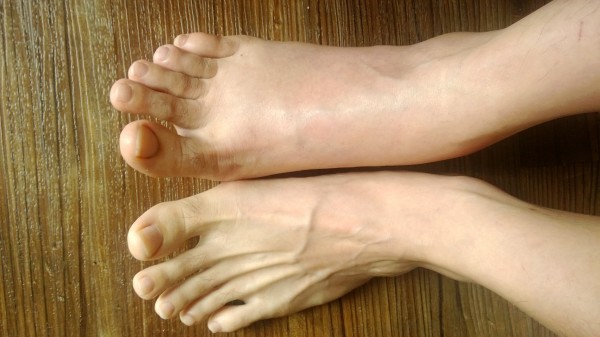When we think of gout, we often think of a disease associated with ruddy, rotund, and middle-aged men in the 18th century. In reality, gout is still a relevant disease that affects men and women around the world today. Chances are, you may even know someone who suffers from gout. Gout is actually a form of arthritis that is caused by hyperuricemia, or a buildup of uric acid.
Uric acid is the byproduct our bodies create when we digest purines. Purines are natural substances often found in foods like steak, liver, seafood, and alcoholic drinks (especially beer). Usually, the kidney filters uric acid out of the blood. However, if the kidney fails to function at the appropriate level, or if uric acid intake is too high to be balanced by kidney excretion, buildup of uric acid in the blood may occur. When these molecules solidify, they form needle-like crystals, which collect in joints and tissues to cause pain and swelling. This is known as gout.
Image Source: Peter Dazeley
There are four stages of gout:
- Asymptomatic tissue deposition: When there are no symptoms but uric acid crystals are forming.
- Acute flares: When the crystal deposits cause acute pain, swelling, and inflammation.
- Intercritical segments: When the patient has feels no symptoms, but experiences “flares” where there is pain, swelling, and inflammation.
- Chronic gout: When the patient has chronic arthritis, soreness, achy joints.
Interestingly, gout often attacks the big toe first. Other commonly affected joints include the knees and ankles. To diagnose gout, the doctor takes a sample fluid from the affected area to look for uric acid crystals. Blood tests can also be done to check the levels of uric acid in the blood.
The most common treatment for gout is the use of anti-inflammatory drugs. Unfortunately, this line of treatment only addresses the symptoms and not the uric acid build-up in the body. However, by making some lifestyle changes, like losing weight and cutting back on foods and drinks high in uric acid, patients can help mitigate the actual progression of gout.
Featured Image Source: Busted! by Ivan Lian










